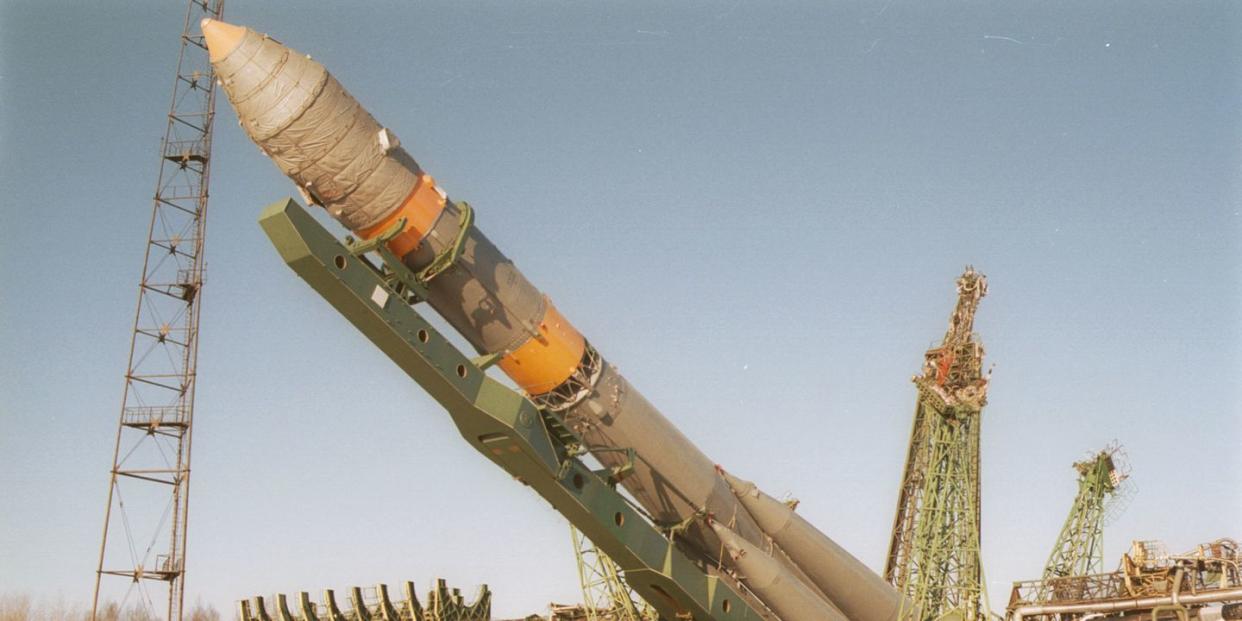Is Russia’s Mysterious New Satellite a Space Weapon?

The U.S. State Department says that a new Russian satellite’s behavior is “inconsistent” with its stated mission. The satellite, which Russia claims is designed to maneuver close to and inspect other satellites, caught the attention of the U.S. intelligence community with its strange activity. The U.S. military and intelligence community rely on satellites for everything from communications and navigation to spying and there are concerns a rival power could attack the United States' satellite fleet in wartime to gain a strategic advantage.
The satellite was launched in June 23, 2017 from the Plesetsk Cosmodrone. Two months later, the Russian government announced the launch involved a described it as a “small-sized satellite....designed for different types of payload.” The payload was apparently a smaller satellite that separated from the main craft, “in order to inspect condition of the Russian satellite.”
On August 14, 2018, according to C4ISRNet, Yleem Poblete, State Department Assistant Secretary of State for Arms Control, Verification and Compliance told an audience in Geneva, Switzerland: “In October of last year the Russian Ministry of Defense deployed a space object they claimed was a ‘space apparatus inspector.’ But its behavior on-orbit was inconsistent with anything seen before from on-orbit inspection or space situational awareness capabilities, including other Russian inspection satellite activities. We don’t know for certain what it is and there is no way to verify it.”
According to the Russian state media, the parent satellite is Kosmos-2519. The smaller satellite “conducted autonomous flight, a change in orbit, and a satellite inspection before returning to the base station.”
Inspection satellites are a new development in the world of satellite technology. Satellites are expensive and often meant to last for years in the hostile environment of space. If something goes wrong it could be difficult to diagnose the problem. An inspection satellite can saddle up to a sick satellite and help engineers down on the ground figure out what’s going on.
The problem with inspection satellites is that they could easily be used as weapons. A satellite that can skillfully maneuver into position to take pictures of another satellite could also fire a laser at it, blinding its optical sensors, or use a robotic arm to physically damage it. It could even collide with the other satellite, executing a kamikaze attack.
How can you tell an inspection satellite from a satellite killer without a good look at it? That’s a good question. While the U.S. can’t get a good look at Kosmos-2519’s passenger, it can observe its behavior and observed something very fishy indeed. Exactly what U.S. spooks saw is a mystery.
All of this comes as there are concerns both Russia and China are working on satellite weapons to use against the U.S. in the event of war. In any future conflict U.S. forces will fight thousands of miles from home, making them more reliant on satellites to communicate with commanders in Washington D.C. and elsewhere in the continental United States. Russia has a ground-based anti-satellite system Nudol but ground-based systems are reliant on satellites passing overhead. According to the Washington Free Beacon two other Russian anti-satellite systems are under development, Rudolph and Tirada-2S, while China is simultaneously developing anti-satellite satellites, lasers, and missiles.
Does this mean that satellite warfare is inevitable in a future conflict? Not necessarily. All of space's major players recognize that satellites are vulnerable to one extent or another, and satellite warfare would be a case of mutually assured destruction. The U.S. military does not have any active satellite weapons, but it could field one fairly quickly. It also has a robust launch capability, with government and private industry able to send replacement satellites into orbit-something neither Russia nor China have. In an extended conflict the U.S. satellite network could be replaced more quickly than an adversary’s, leaving the American side with a net-and decisive-advantage.
('You Might Also Like',)

